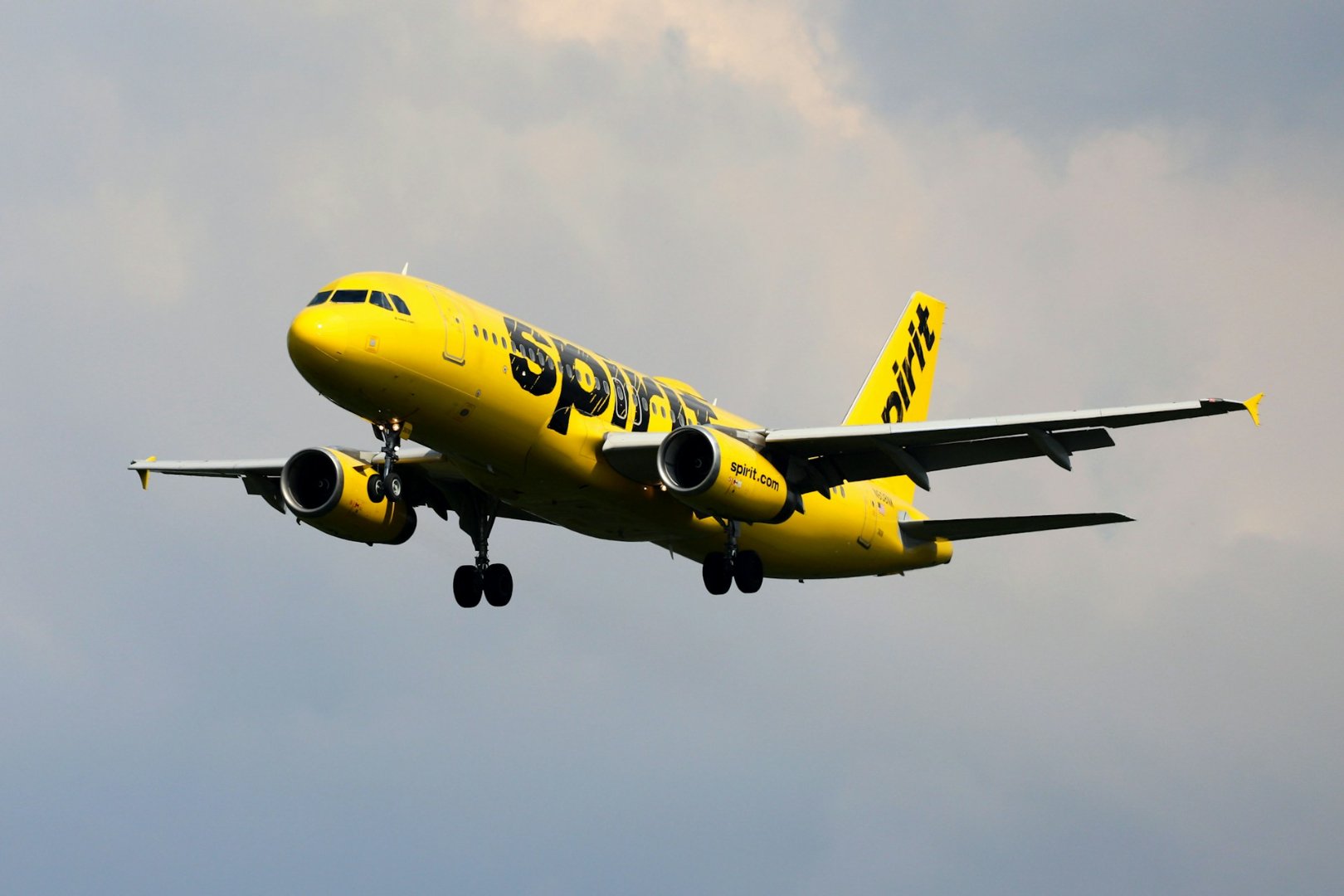(FORT LAUDERDALE, FLORIDA) A Spirit Airlines flight from South Florida to Boston drew sharp warnings from air traffic control after the crew lagged on a safety instruction while Air Force One was nearby carrying President Trump and First Lady Melania Trump to the United Kingdom.
The exchange, recorded on Tuesday, September 16, 2025, shows the controller repeating a clear order—“Pay attention. Spirit 1300, turn 20 degrees right”—to ensure the Spirit flight held a safe buffer from the presidential aircraft. The Spirit pilot later acknowledged and complied. The flight continued and landed without incident at Boston Logan International Airport.

Spirit Airlines said the flight followed procedures and air traffic control instructions while en route, stressing that safety is always the airline’s top priority. The controller’s tone—and the added command to “Pay attention, get off the iPad”—underscored how strictly crews must respond when Air Force One is in the area. According to analysis by VisaVerge.com, events like this are rare, but they highlight how a single delayed response can prompt stronger oversight from controllers, especially during high-security movements.
What happened in the exchange
The incident occurred as Spirit Flight 1300 departed Fort Lauderdale for Boston with Air Force One reported about 8 miles away.
- When the controller instructed the Spirit crew to turn 20 degrees right, the call went unanswered at first.
- The controller repeated the instruction and added the admonition to get off the iPad.
- Only after that did the pilot read back and execute the instruction.
- The Spirit flight landed normally in Boston, with no disruptions noted after the exchange.
Why controllers respond strongly near Air Force One
While the recording drew public attention for its tone, aviation experts say the substance was routine. When Air Force One is in flight, it receives priority handling, and nearby aircraft must follow directions without delay. Controllers often tighten spacing and headings to keep a sterile bubble around the presidential aircraft.
Key expectations during presidential movements:
- Priority handling: Air Force One receives priority clearance and protection measures from ATC.
- Mandatory compliance: Aircraft nearby must follow instructions immediately to keep safe separation.
- Communication discipline: Fast, clear read-backs reduce risk and keep operations predictable.
The goal is simple and strict—maintain distance, ensure safety, and keep the operation moving smoothly.
Policy and security context
When Air Force One is in the vicinity, special procedures apply. Air traffic control may adjust headings, altitudes, and speeds of nearby flights to preserve a safety zone around the presidential aircraft and its escorts. This can include quick vectors and direct instructions, with the expectation that pilots respond promptly and clearly. The exchange with Spirit Flight 1300 reflected that expectation: the controller emphasized attention and compliance, which are standard requirements during presidential movements.
For official reference on restricted airspace during VIP movements, see the FAA’s resource page: FAA Temporary Flight Restrictions.
Impact on travelers and airlines
Events like this can ripple through busy corridors, including South Florida and the Northeast. Even a small course change—such as turn 20 degrees right—can trigger additional adjustments for other flights when skies are crowded.
Common operational effects for passengers:
- Slightly longer routings or landings as ATC threads aircraft around VIP traffic.
- Occasional gate or taxi delays at airports where Air Force One departs or arrives.
- In rare cases, short ground stops near the presidential route.
Operational reminders for crews:
- Device use in the cockpit must never interfere with communication.
- Airlines have internal policies on electronic devices during flight operations.
- Federal rules require pilots to monitor and answer ATC.
Spirit’s statement stressed adherence to procedures, and the uneventful landing shows the system worked after the instruction was followed.
Aftermath and likely actions
Officials did not announce any new policies as of September 2025, but incidents like this often prompt internal reviews. Typical follow-up steps include:
- Checking radio logs and playback timelines.
- Reviewing cockpit workload and distraction sources.
- Issuing reminders or briefings to crews and ATC staff where appropriate.
No regulatory changes were reported, and procedures for flights near Air Force One remain the same.
Practical takeaway
The national airspace system relies on standard phrases, quick read-backs, and trust between pilots and controllers. Most days, that choreography is invisible. On Tuesday, it became audible. The words—“Pay attention. Spirit 1300, turn 20 degrees right”—carried a sharp edge because the stakes, while routine, were high. The system held, and the flight landed safely.
Safety guidance distilled:
- Listen first, reply fast, and comply immediately.
- Keep cockpit focus on flying and radio monitoring.
- Ask for clarification if needed—but do so quickly.
Travelers seeking reliable information about VIP airspace measures and day-of flight adjustments can check airline alerts and the FAA’s public TFR resources at FAA Temporary Flight Restrictions. Airlines may also issue notices when presidential travel affects gate timing, taxi routes, or departure windows.
Airline staff often say that clear radios are as vital as clear skies. This brief, contained incident offered a rare window into how that principle plays out when Air Force One crosses a busy corridor and a commercial jet needs a quick course change. The message was heard, the correction was made, and the quiet landing in Boston told the rest of the story.
This Article in a Nutshell
On September 16, 2025, Spirit Flight 1300 from Fort Lauderdale to Boston delayed responding to an ATC safety instruction while Air Force One was approximately eight miles away. The controller repeated the command—”Pay attention. Spirit 1300, turn 20 degrees right”—and admonished the crew to cease using an iPad during the maneuver. The pilot then read back and executed the turn; the flight proceeded to land safely at Boston Logan. Spirit Airlines confirmed adherence to procedures. The incident highlights strict ATC expectations near presidential aircraft, the role of TFRs, and potential internal reviews focusing on cockpit focus and communication discipline.












